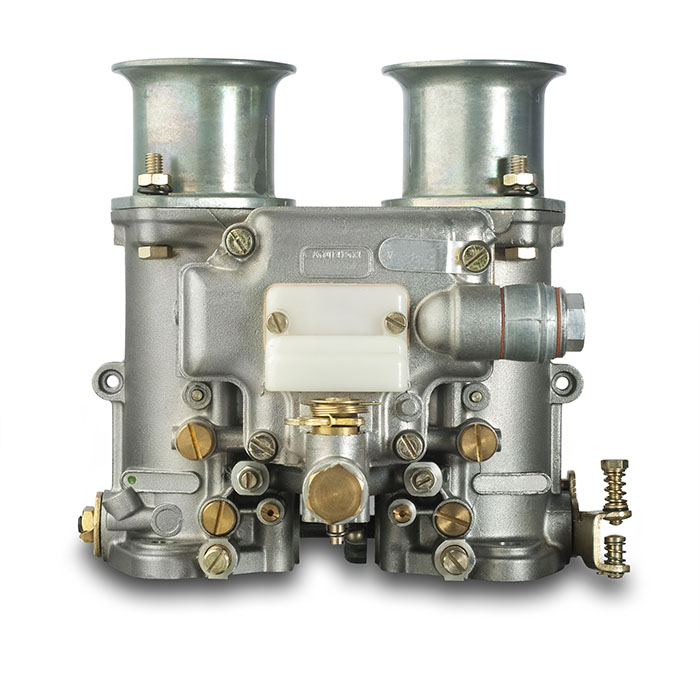From 1950 until the late 1970s, Weber carburetors were the sign of a performance engine. They could make an engine breathe, or, in the wrong hands, make an engine choke on it’s own fuel. A Weber carburetor is a simple device with fewer moving parts than an American-style four-barrel carburetor, but it is a lot more tunable.
Weber carburetors are marked with a model code on the mounting flange, the body, or on the cover of the float-chamber. This begins with a number that indicates the diameter of the throttle bore. If this number has a single pair of digits, both bores are of the same diameter and operate together. If it has two pairs of digits, there is smaller primary bore and larger secondary bore. Most of the time, these split number are followed by letters “DG.”
Next in the model name will be two to four letters that describe the configuration and design of the carburetor. Note: These acronyms were originally translated from Italian and do not translate well. Also, Weber really does not follow any standardized nomenclature to how the letters are organized.
So, a 38DCOE is a Weber with two 38 mm bores that is horizontal or side draft. A 42IDA is a vertical carburetor that is made for racing. But, the 38 mm bore can differ in size depending on the application. The bore size can be altered with a “choke tube” or venturi that changes the CFM rating of the carburetor. This is why you can have a 350 cubic inch engine and a 454 cubic inch engine running four 38 mm Webers. The difference is the size of the venturis.
Webers typically have an idle, acceleration pump and main circuit. All the bores have their own circuits and jets along with a number of adjustments for idle. On multiple carburetor arrangements, it can require a lot of adjustments to make sure the throttle plates are synchronized.
The natural enemy of the Weber is a novice with a screwdriver. Learning how to tune a multiple Weber setup is part art and part science. When a master is able to match the jets, venturis and adjustments to the engine, it can really make an engine sing.
What Does The Name Mean?
D: downdraft.
DC: means “doppio corpo” in Italian, or “double-throat” in English.
V: “verticle” or ventricle. But some models use a D to indicate that the carburetor stands up.
O: “orizzontale” or horizontal/sidedraft.
I: This letter in IDA or IDF means “invertito,” or inverted. The “I” can also indicate a racing/high-performance version of a carburetor. It can also indicate the float arrangement.
E: type of casting, or it can also indicate an electric choke on DG series carburetors.
F: is another mystery that has been rumored to mean Ferrari or Ford.














